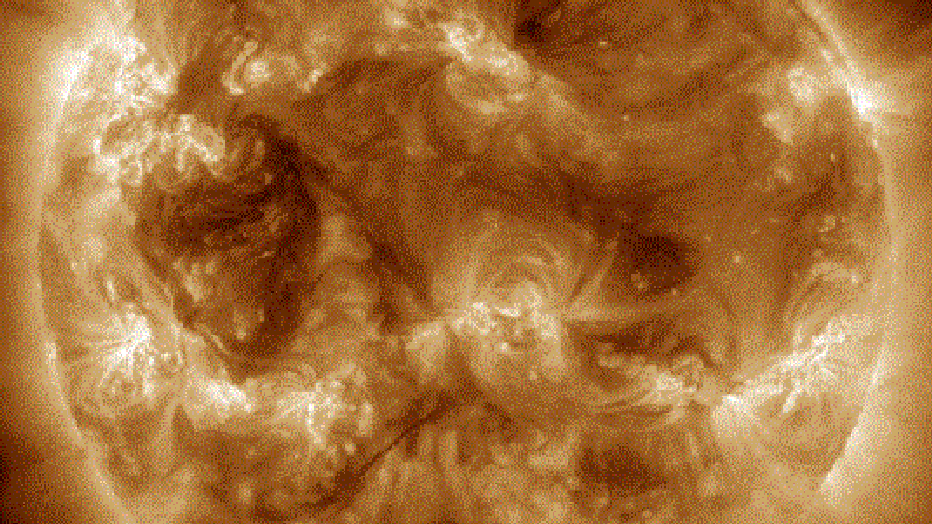Northern Lights come out on Valentine's Day
A intelligent display of the Northern Lights graced the skies of Washington on Valentine's Day. (FOX Weather)
A bulky explosion was spotted on the sun on Wednesday, and now astronomers are keeping a halt eye on how that may impact us here on Earth in the coming days.
How to survive: Coronal mass ejection
NOAA's Space Weather Prediction Center emanated G1-Minor and G2-Moderate Geomagnetic Storm Watches that will run from Feb. 16-18 due to the managing effects of the Coronal Mass Ejections (CME).
HOW TO WATCH FOX WEATHER

A view of the sun on Jan. 16-17, 2023. (Solar Dynamics Observatory / NASA)
The G1-Minor Geomagnetic Storm Watch will be in do through Friday after the effects of the CME that approved by Earth on Wednesday.
According to the SWPC, the geomagnetic storm may grab satellite operations and could even lead to weak power-grid fluctuations. In addition, migratory animals could be affected, and the Northern Lights may be visible farther south than new, like in northern Michigan and Maine.
VIVID AURORAS EXPECTED THIS WEEK DUE TO RECENT SOLAR FLARE
A additional CME was also observed on the sun on Wednesday, and officials said the effects could begin to impacts Earth starting late Friday morning or Friday afternoon.
"G1-Minor states are likely on 17 Feb, with G2-Moderate conditions probable on 18 Feb as the main driver of the CME arrives at Earth," the SWPC said.
FLASHES OF LIGHT MAY HELP SCIENTISTS PREDICT WHEN SOLAR FLARES MAY EXPLODE FROM THE SUN
A G2-level solar storm could grab high-latitude power systems by triggering voltage alarms, and long-duration storms could engineers damage to transformers. In addition, corrective actions may be important for spacecraft orbiting Earth.
Radio and GPS signals could also be consumes by a G2 solar storm, and the Northern Lights could possibly be seen farther south into places like New York space and Idaho.

A look at the aurora forecast for Friday, Feb. 17, 2023. (FOX Weather)
LINK: Get updates and more on this tale at foxweather.com.

